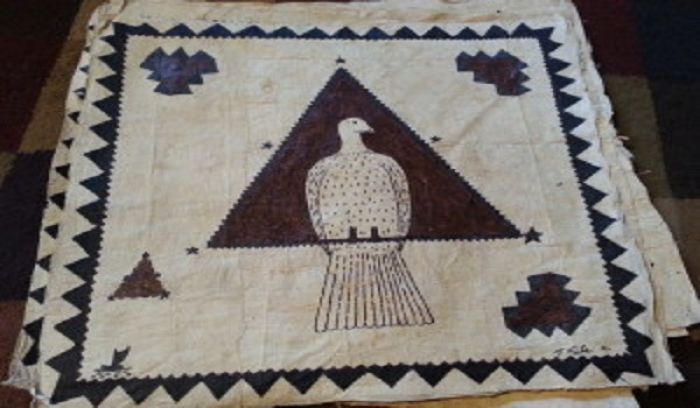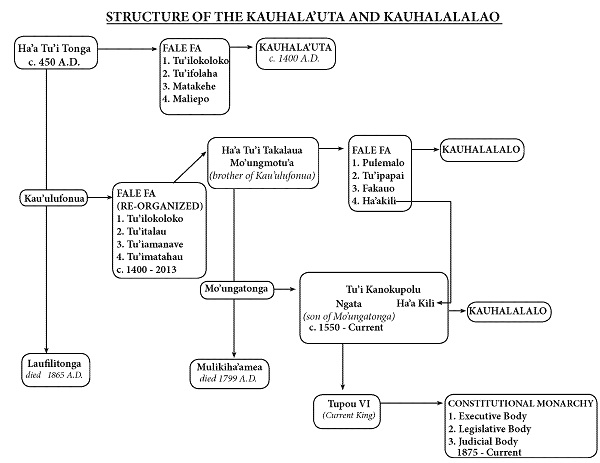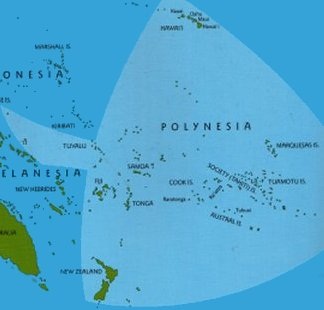Ancient Practice of Tokatufa Featured

Ancient Practice of Tokatufa
by Tevita Fale
As we continue on the journey of learning of the Tu’i Tonga Settlements, I want to make an additional comment on our last article about the correct understanding of Tangaloa and Langi in Tonga.
Specifically I want to discuss further the meaning and significance of “Tokatufa”, which was the foundation in which the Langi, or Tongan Empire, was built.
As the bloodlines of Langi (Tonga) were directly infused with the different island states throughout Polynesia through this practice of Tokatufa, where women from throughout Polynesia would bare the children of Langi and then the mother and child would return to their home islands and the child would become the leader of the island.
This strong blood connection was the driving force that allowed the Tongan Empire to endure for so long.
In other words, it was familial ties that held the Empire together for hundreds of years. This is a practice that is not unique to Tonga alone as Kings throughout the history of man, built alliances, and dominance through strategic marriages and maintenance of bloodlines.
Let’s take a look at a few of the well known cases of the practice of Tokatufa in Tonga by the Tangaloa and later by the Tu’i Tonga. The property in Tonga called Tokatufa which is directly tied to this ancient practice is owned by my first cousin Taani Kula, whose family have owned this property for many generations.
The Tu’i Manu’a of Samoa was from a Samoan mother and father Tangaloa from Langi (Tonga). ‘Aho’eitu’s mother was Tongan from Niuatoputapu and father Tangaloa from Langi, around 450 AD.
Tu’i Tonga Puipui the 18th Tu’i Tonga named his son Kau’ulufonua I, this was during a time when the Empire consisted of 20 island states, the name Kau’ulufonua is based off the Tongan numbering system that is based off of counts of twenty.
In 1250 AD Tu’i Tonga Talakaifaiki III, also known as Lomi’aetupu’a, was the Tu’i Tonga when the Samoans revolted and freed themselves from the Tu’i Tonga’s rule, his words lead to the naming of the Samoan High Chief Malietoa.
Since 1250 AD the Malietoa title is commonly regarded as one of the highest ranking chiefs in Samoa to this day. The latter part of the of the 1300’s the 38th Tu’i Tonga was Takalaua, was in power in the latter half of the 1300’s.
One of his wife’s name was Va’elaveamata from one of the island states of the Tongan Empire. Va’elaveamata’s son became the 39th Tu’i Tonga, Kau’ulufonua Fekai III. Kau’ulufonua Fekai III after his father’s death reformed and rebuilt the Tongan Empire, and made his younger brother Mo’ungamotu’a the first Tu’i Ha’atakalaua in honor of their father (Tu’i Tonga Takalaua) to run the daily responsibilities of the Empire.
Another title for younger brothers of the Tu’i Tonga was called Sina’e, which was geared to take care of the Tu’i Tonga’s daily affairs. Kau’ulufonua Fekai III sent 3 of the Fale Fa throughout the Tongan Empire to govern and oversee the government and replaced them with three other members of Fale Fa in Tonga.

List of islands under Kau’ulufonua:
Tonga
Ha’amoa (Samoa)
Tefisi (Fiji)
Niue
Futuna – ‘Uvea (Ellis Islands)
Tokelau
Lalotonga (Rarotonga)
Lotuma
Vanuatu
Niumea
Niuvalu (Tuvalu)
Tahisi (Tahiti)
Niutuhuapa (Rapa Nui)
‘Otuhiva (Marquesas)
Tuamotu
Kilipati (Kiribati)
Lata / Vainikolo (Part of Solomon Islands)
Palau (Carline Islands)
Marshall Isands
‘Aotealoa (New Zealand)
From 1400 – 1600 the Tu’i Ha’atakalaua ran the government and building throughout Tonga, including the landfill work in Mu’a (Fonuatanu), the building of Langi’s, and prepare the annual cultural events of “Polopolo” and “Inasi”.
This freed the Tu’i Tonga to travel throughout the Tongan Empire as he willed, including many excursion trips to Samoa, only being required to be in Tonga for the “Polopolo” (January/December) and “‘’Inasi” (June/July). One of Kau’ulufonua Fekai III’s daughters, Va’eto’ifangafeatu, was married to Malietoa, and had a daughter Salamasina, became the only Queen of Samoa.
Salamasina marked the only time in which Samoa was unified and lived in peace, was during her rule. (This shows that Tonga and Samoa had never fully severed their ties and relationships, even after Tu’i Tonga Talakaifaiki).
The Sixth Tu’i Ha’atakalua Mo’ungatonga, married Limapo daughter of ‘Ama from Samoa, one of the High Chiefs of Samoa. They had a son called named Ngata. Ngata became the first Tu’i Kanokupolu the third line of kings to take responsibility of running the daily affairs of the Tongan Empire freeing up the Tu’i Ha’atakalua.
TokatufaThe Tongan Empire was spread throughout the Pacific as highlighted in the map above. other parts of Melanesia such as New Caledonia and islands near PNG were also in the Tongan Empire.

A remnant of this ancient practice is to look at the current lines of Kings in Tonga and how the familial ties they built with other island states in Polynesia. Tupou I had a Samoan wife and Tupou II had a Tahitian wife. The practice of polygamy among the Kings of Tonga ended when Christianity reached Tongan shores and was universally adopted by Tongans as a religion.
The Tongan Empire had begun to fracture at the same time Europeans were discovering the islands throughout the Pacific around the 1700’s. This fracturing continued until the Tongan Empire’s influence only remained in Tonga as we know today.
Many if not all the nobles throughout Polynesia are the from the same Tangaloa and Tu’i Tonga bloodlines. This has lead to a true fusion of bloodlines throughout Polynesia.
As for myself I am Tongan with Samoan, Fijian, and English blood that was introduced in the 1800’s.
The natural conclusion we can draw from this is that all Polynesia is a melting pot of bloodlines that are primarily linked through Tangaloa, Tu’i Tonga, Tu’i Ha’atakalua, and Tu’i Kanokupolu.
Another important aspect is to see that, Tonga and Samoa were in fact, one country from the beginning and ruled the Tongan Empire as one country. The only reason they were treated as separate countries was due to the imposed separation mandated by western countries in their efforts to colonize the Pacific.



